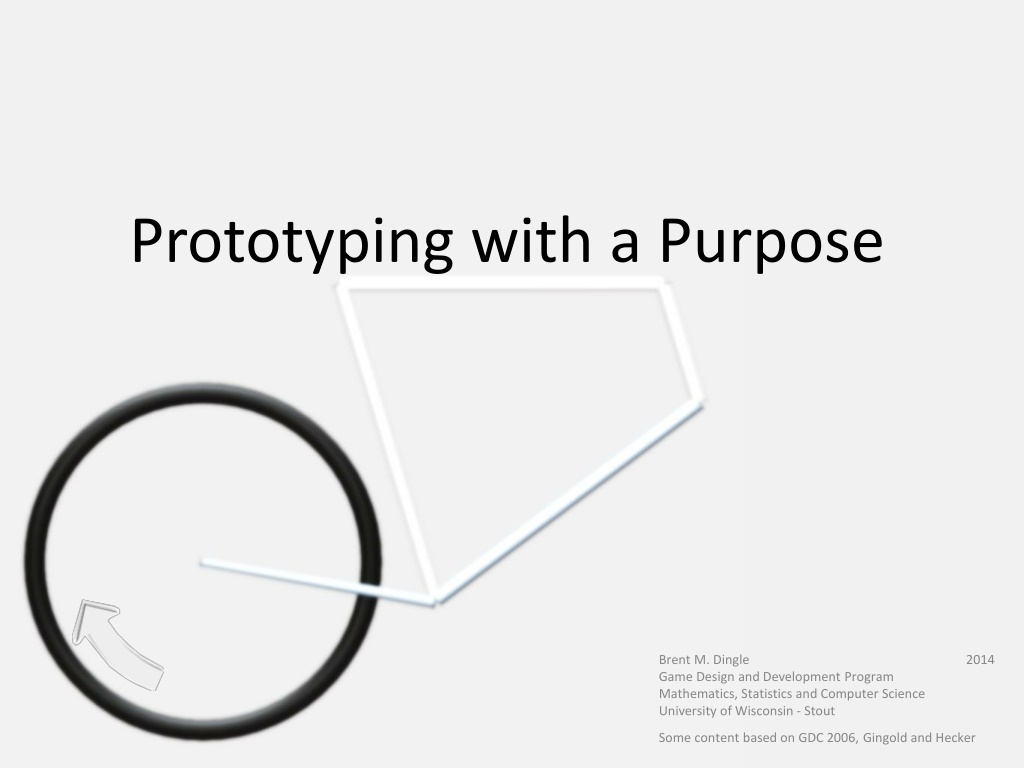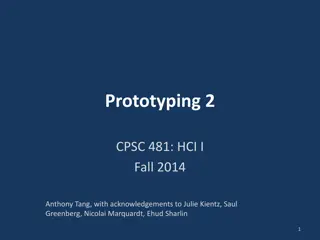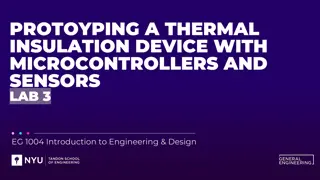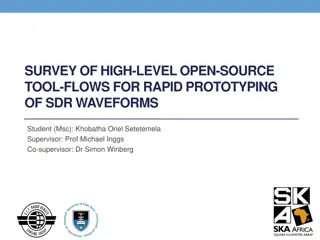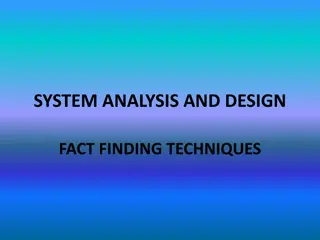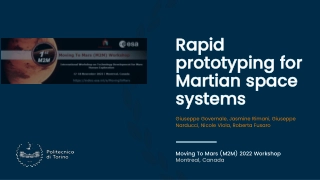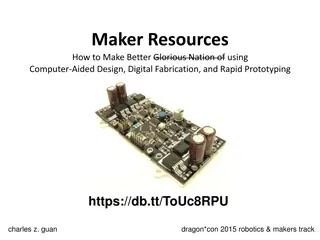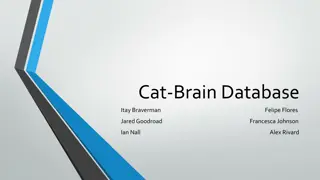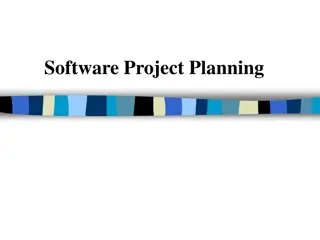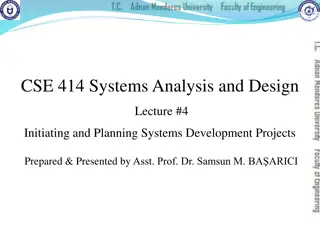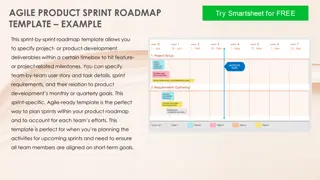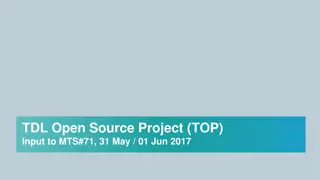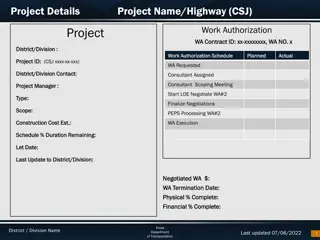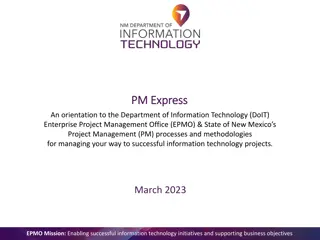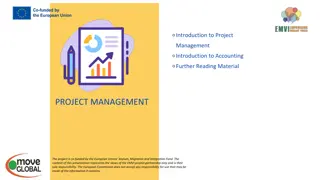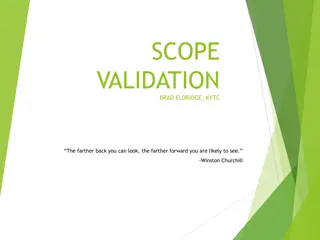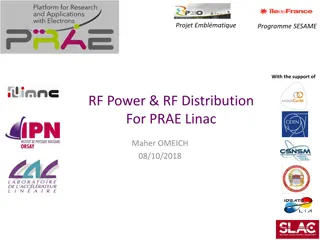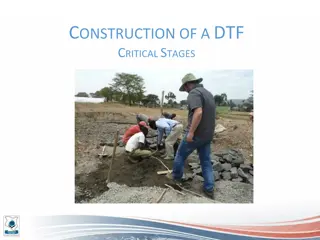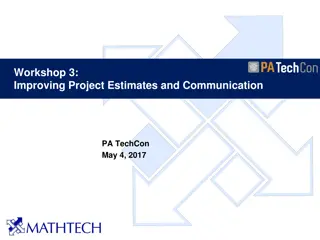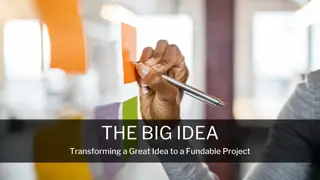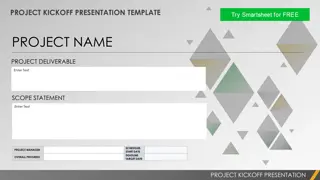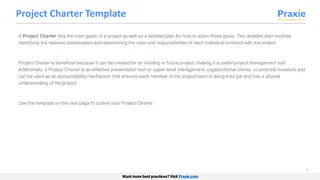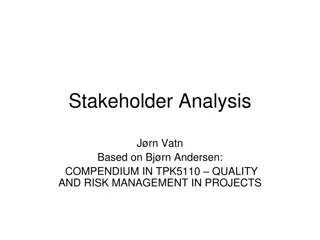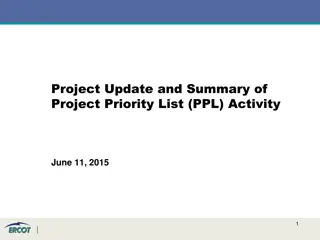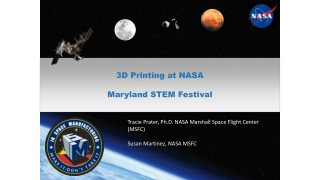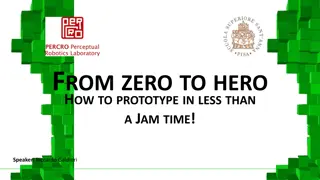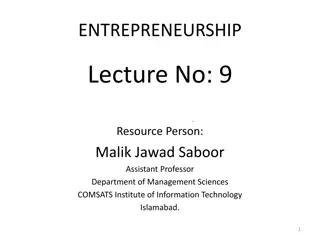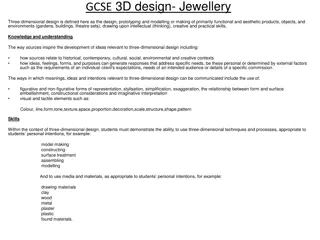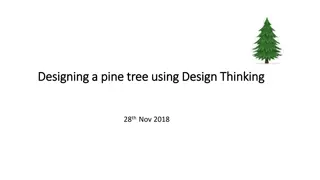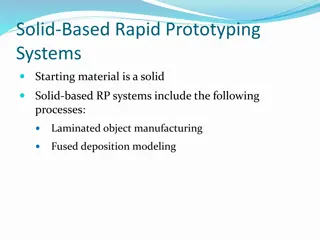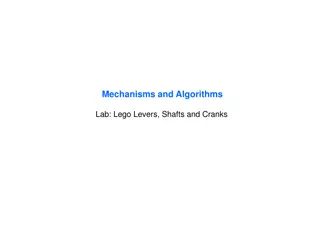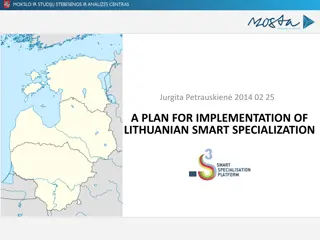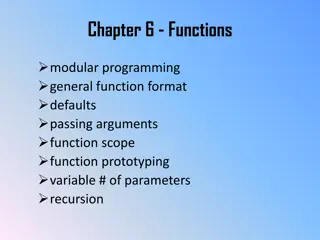Importance of Prototyping for Successful Project Development
Learning the significance of prototyping, asking good questions, decomposing a project, measuring a prototype, and understanding the stages of production can greatly enhance the success rate of game design and development projects. Prototyping helps in testing, proving, learning, and adapting, ultimately leading to persuasive outcomes and uncovering unexpected upsides and downsides. Effective prototyping is essential for discovery, preproduction, development, and successful selling of ideas.
Download Presentation

Please find below an Image/Link to download the presentation.
The content on the website is provided AS IS for your information and personal use only. It may not be sold, licensed, or shared on other websites without obtaining consent from the author. Download presentation by click this link. If you encounter any issues during the download, it is possible that the publisher has removed the file from their server.
E N D
Presentation Transcript
Prototyping with a Purpose Brent M. Dingle Game Design and Development Program Mathematics, Statistics and Computer Science University of Wisconsin - Stout 2014 Some content based on GDC 2006, Gingold and Hecker
Presentation Outline Prototyping General Info Asking Good Questions How to Decompose a Project How to Measure a Prototype
Using Prototyping Many ways to look at how Prototyping is used Conceptually the same in every case Test something, Prove Something Learn, Adapt
High Level Production Stages Have an Idea Discovery Preproduction Develop Sell
High Level Production Stages Have an Idea Discovery Preproduction Develop Sell Prototyping is useful and often necessary
Why Prototype? Most Common: Answer questions e.g. Will this work? YES this will work = PERSUASIVE Also Discover/uncover the unexpected downside and upside Persuade and inspire
Why Prototype? Most Common: Answer questions e.g. Will this work? NO this will not work = DOWNSIDE BUT it does do this and this = UPSIDE Also Discover/uncover the unexpected downside and upside So what if we do it like this Persuade and inspire
Why Prototype? Most Common: Answer questions e.g. Will this work? Also Discover/uncover the unexpected upside and downside Persuade and inspire
Presentation Outline Prototyping General Info Asking Good Questions How to Decompose a Project How to Measure a Prototype
Important: Ask a Good Question How to formulate good questions for prototyping Focus On Where do you need understanding? Target other questions in this area Let s consider some examples questions
Question Can we make a fun social game between characters? Is this a good or bad question to use a prototype to answer?
Poor Question Can we make a fun social game between characters? Bad! There is nothing to try and test here. What idea do you want to try out?
Question Is the Leg User Interface concept user friendly, powerful, and cool? Is this a good or bad question to use a prototype to answer?
Good Question Is the Leg UI concept user friendly, powerful, and cool? Good! It is testable. Build it. Demo it. Ask people about it. Do they need help? Is it cool? Does it accomplish what we want it to?
Question Can rolling around a sticky ball be compelling? Is this a good or bad question to use a prototype to answer?
Good Question Can rolling around a sticky ball be compelling? Good! It is testable. Build it. Demo it. Ask people about it. Do they think it is cool and fun? And do they keep playing?
Question Here is the game description document. Is it going to be fun? Is this a good or bad question to use a prototype to answer?
Poor Question Here is the game description document. Is it going to be fun? Bad! It is an idea. But is very unfocussed. It basically would require the entire game to be built, which really is not a prototype. You must deconstruct/decompose the features. How do you reduce a large problem into smaller manageable ones? And stay relevant to the big picture of the project s idea (it s vision)? This is a skill to learn.
Presentation Outline Prototyping General Info Asking Good Questions How to Decompose a Project How to Measure a Prototype
Decomposition Examine what you need to know about
Decomposition Examine what you need to know about Divide it into smaller pieces
Decomposition Examine what you need to know about Divide it into smaller pieces Make sure the pieces fit together
Decomposition Examine what you need to know about Divide it into smaller pieces Make sure the pieces fit together Keep track of which pieces depend on others
Decomposition Examine what you need to know about Divide it into smaller pieces Decent Size Large Size Huge Size Make sure the pieces fit together Out of Bounds Keep track of which pieces depend on others Know the bounds of your prototype
Decomposition Examine what you need to know about Divide it into smaller pieces Make sure the pieces fit together Keep track of which pieces depend on others Know the bounds of your prototype Do not overreach Stay inside the lines of your piece
Presentation Outline Prototyping General Info Asking Good Questions How to Decompose a Project How to Measure a Prototype
Measuring a Prototype Metrics Cheap Falsifiable Relevant
Measuring a Prototype Metrics Cheap Take less effort than the real thing Cost almost nothing (very little) Falsifiable Relevant
Measuring a Prototype Metrics Cheap Adding suggestions and changes should be trivial Agile Falsifiable Relevant
Measuring a Prototype Metrics Cheap Agile Light Typically only one person working on a prototype at a time Falsifiable We use teams of two for multiple educational reasons Relevant
Measuring a Prototype Metrics Cheap Agile Light You should be looking to prove something. Falsifiable You should be able to prove a good idea is good and a bad idea is bad Relevant
Measuring a Prototype Metrics Cheap If you cannot explain why or what you want to achieve by making a prototype, Agile Light then you may want to rethink making it The prototype should be needed to validate or disprove something Falsifiable Make a Claim Example: The [blarg] on the right side of the screen improves [shozbot] more than having it on the left side of the screen Relevant
Measuring a Prototype Metrics Cheap How does your prototype TEST your claim? Agile Light Will it show something is clearly working or not? Falsifiable Make a Claim Testable Design the prototype so it obviously shows success or failure. This is not a theoretical experiment. And the results should not be open to much variance in interpretation Relevant
Measuring a Prototype Metrics Cheap Agile Light Falsifiable Make a Claim Testable Tested Tested by others NOT just by prototype s creator(s) Data collected Explain why the design is this way based on the data Relevant
Measuring a Prototype Metrics Cheap Agile Light Falsifiable Make a Claim Testable Tested Learn Relevant Identify and Record: What was learned from the prototype?
Measuring a Prototype Metrics Cheap Prototypes must be relevant to the project at hand Generalizable helps Prototype becomes incorporated into product Code or Art can be reused Design Reuse Reference point for design/development Agile Light Falsifiable Make a Claim Testable Tested Learn Relevant
Measuring: In The Bonus Surprising Feedback Upside Downside Inspiring Good prototypes do something unexpected and useful Persuasive Fun Tangible Clear Disruptive
Measuring: In The Bonus Surprising Feedback Upside Downside Inspiring Good prototypes do something unexpected and useful Good prototypes get lots of feedback You want people to comment and not just yeah good or yeah bad If you have to beg to get meaningful feedback Something is off and it could be something major that nobody wants to talk about Like the whole concept stinks or the prototype is pointless Persuasive Fun Tangible Clear Disruptive
Measuring: In The Bonus Surprising Feedback Upside Downside Inspiring Good prototypes do something unexpected and useful Good Prototypes should uncover GOOD and BAD things If all goes as planned with no exciting discoveries or hidden pitfalls the prototype is likely off in some way Persuasive Fun Tangible Clear Disruptive Perhaps the wrong question(s) are being asked
Measuring: In The Bonus Surprising Feedback Upside Downside Inspiring Good prototypes do something unexpected and useful A prototype should inspire MORE Questions Revealing more fun stuff or problems to investigate WARNING: Eventually the continued exploring must end (be saved for later). This hopefully happens when the problems to investigate are small and the fun is large. Persuasive Fun Tangible Clear Disruptive If you are lucky you will always think it ends too soon. If you are really lucky you will get to go back and do more (like sequel oh yeah)
Measuring: In The Bonus Surprising Feedback Upside Downside Inspiring Good Prototypes should Convince people of things Persuasive Fun Tangible Clear Disruptive
Measuring: In The Bonus Surprising Feedback Upside Downside Inspiring Good Prototypes should Convince people of things The prototype needs to be cool, exciting, entertaining, FUN! That is what the game needs to be too So in the background the prototype tests more than just a single question Persuasive Fun Tangible Clear Disruptive People must want to see and play your prototype just as they would the game They should be excited about what you are doing - Just like they would the game - Again wanting to be involved, give feedback
Measuring: In The Bonus Surprising Feedback Upside Downside Inspiring Good Prototypes should Convince people of things Prototypes are not theory. They should CLEARLY communicate and make REAL whatever they are getting at Persuasive Fun Tangible Clear Disruptive People should look at the prototype and GET IT The design, the concept, the fun, the interface, whatever. Minimal explanation should be required.
Measuring: In The Bonus Surprising Feedback Upside Downside Inspiring Good Prototypes should Convince people of things Prototypes are not theory. They should CLEARLY communicate and make REAL whatever they are getting at Persuasive Fun Tangible Clear Disruptive People should look at the prototype and GET IT The design, the concept, the fun, the interface, whatever. Minimal explanation should be required. Hopefully that is clear
Measuring: In The Bonus Surprising Feedback Upside Downside Inspiring Good Prototypes should Convince people of things Persuasive Fun Tangible Clear Disruptive Prototypes should change people s minds If nobody is convinced of anything Then what is the prototype really doing?
Keeping the Prototype Prototypes may be labeled throw away However The results must be kept to be able to Revisit and Reexamine the results A good prototype (and its results) Will be consulted multiple times throughout development If no one ever revisits it, then perhaps it was not such a useful thing to prototype The answers it provided were never really in question? Or the questions were not very useful? Or it never really answered anything?
Additional Information/Resource GDC 2006: Advanced Prototyping Presentation by Chaim Gingold and Chris Hecker
